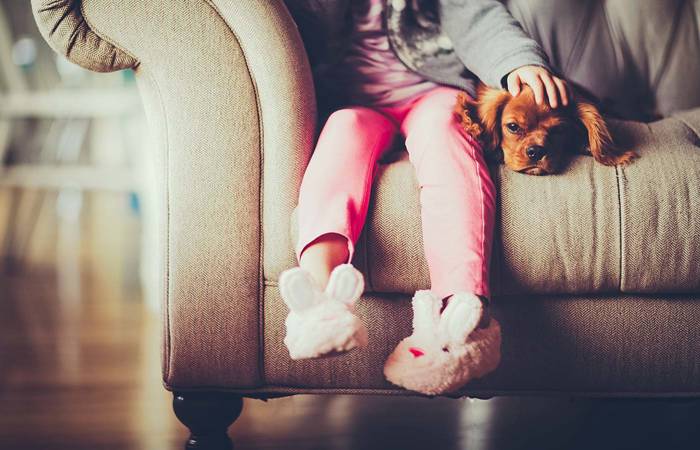Like what you see?
Sign up to receive more free parenting advice.
Thank you for subscribing to our newsletter!
Early Learning

Credit: iStock.com/AleksandarNakic
Australian children aren’t moving enough to maintain healthy growth and development.
A global report on children’s physical activity comparing 49 countries, has found Australia lags on measures of Overall Physical Activity, Active Transport, Screen Time and Physical Fitness with an overall grade of D-.
In the Active Healthy Kids Australia (AHKA) 2018 Report Card on Physical Activity for Children and Young People, Australia tied at 32nd place out of 49 countries for our Overall Physical Activity grade.
The D- grade indicates there has been no change in children’s overall physical activity levels since the previous biennial report cards (released in 2014 and 2016).
The report shows that modern lifestyles, including increases in screen time, the urbanisation of communities and the increasing automation of previously manual tasks, are contributing to what is now a pervasive public health problem.
We need to make a conscious decision to turn this around, if we are to improve the health of new generations of Australian children.Dr Natasha Schranz
AHKA Co-Chair, Dr Natasha Schranz (Heart Foundation Research Translation Manager, and University of South Australia Adjunct Research Fellow) says much more needs to be done at a behavioural level to improve kids’ activity.
“We need to make a conscious decision to turn this around, if we are to improve the health of new generations of Australian children," she says.
“Research shows us that in Australia, less than one in five children get the recommended 60 minutes of huff and puff (aerobic) activity each day and most children engage in more screen time, than recommended, every day."
How did the under 5-year-old children fare?
Dr Schranz says that the available data for 0 to 5 years old “is very much lacking” and more high quality data is needed.
“While we did feature data for the early years, only the grade for Screen Time was influenced by the data available for that age group - which shows similar poor grades to older children.
“We need more representative high-quality data collection for the early years so we can be certain how much activity they are engaging in on a daily basis.”
As for screen time, our children are not meeting Screen Time guidelines.
The parent-report data shows that 73% of infants and toddlers (0 – 2 years old) and 73% of pre-schoolers (3 – 5 years old) are engaging in some screen time on a daily basis.
The Australian 24-Hour Movement Guidelines for the Early Years (birth to 5 years): An Integration of Physical Activity, Sedentary Behaviour, and Sleep, 2017, recommends that toddlers under two years old should have no screen time, while children from two to five years old should have no more than one hour of screen time per day (with the recommendation of “less is better”).
Dr Juliana Gomes Zabatiero (Research Associate, School of Physiotherapy and Exercise Science, Curtin University) and Professor Leon Straker (John Curtin Distinguished Professor, School of Physiotherapy and Exercise Science, Curtin University & AHKA Executive Committee and Research Working Group member), recommend that good screen time for two to five-year-old children “will almost always involve doing some activity with an adult, with the adult helping them make sense of it. Linking screen time with physical activity is also a good use of screen technology”.
“On the flipside, things to avoid with screen technology use include: prolonged passive viewing, highly repetitive tapping and swiping, frightening or violent content and any use in the hour or so before bedtime.”
How much physical activity should our children be doing each day?
The Australian guidelines 24-Hour Movement Guidelines for the Early Years (birth to 5 years) for babies under one year old, recommend being physically active several times a day, while for those who aren’t mobile yet at least 30 minutes of tummy time can be spread throughout the day.
For toddlers aged one to two years old, at least 180 minutes of physical play, including energetic play, spread throughout the day.
For pre-schoolers aged three to five years old, at least 180 minutes of physical play, including at least 60 minutes of energetic play.
The theme through the recommendations is more physical activity is better.
Dr Schranz says that physical activity includes different types and intensities of movement.
“For example, children could be physically active by playing organised sport, using active transport to get to school, learning how to kick a football in PE or engaging in unstructured activity or active play, for example mucking around.
“When we talk about intensity, that refers to how much effort a child is exerting when being physically active, which could fall under light (helping mum or dad in the garden), moderate (walking to school with their bag on their back) or vigorous (running down the field in a soccer game trying to catch an opponent).
“When we look at the proportion of children and young people meeting physical activity guidelines, we want to know how many are getting at least 60 minutes of moderate to vigorous physical activity (or huff and puff activity).
“The equivalent of that for the early years is termed energetic play which doesn't have such a hard and fast definition, but it provides guidance that it should be more than just toddling around.”
How do we make sure our children are being active enough?
Dr Schranz emphasises the importance of spending time outdoors with our children.
“We know that kids engage in more physical activity when they are outdoors so spending as much time outside as possible is really important.”
She says that being outdoors allows children to be active in unstructured play and for them to see what their bodies are capable of.
“This includes things like rough and tumble play, climbing, running, dancing, and playing with balls which will all help develop their fundamental movement skills,” says Dr Schranz.
“It is important that parents are active with their children as much as possible.”
As for muscle building, Dr Schranz says that it is more important to provide different opportunities, particularly outside, rather than purposeful muscle building activities which is recommended for older children.
While there is an awareness that our children need to be more physically active, there has also been increased awareness of children and positive body image messages.
Dr Schranz recommends keeping discussions focused on physical activity being “good for health, happiness, social connection and, most importantly, that it is fun”.
Dr Schranz also notes that getting children more physically active isn’t one person’s job.
“To get kids around Australia to be more physically active, we need a whole of society shift that sees physical activity being made a priority every day,” she says.
“There is no one person, organisation or group who can solve the inactivity crisis.
“We all need to play our part and make sure we move as much as we can every day.”
Guidelines for healthy growth and development for your child1
Babies (infants) under 1 year of age:
- Physical activity: Being physically active several times a day in a variety of ways, particularly through supervised interactive floor-based play, including crawling; more is better. For those not yet mobile, this includes at least 30 minutes of tummy time, which includes reaching and grasping, pushing and pulling, spread throughout the day while awake;
- Sedentary behaviour: Not being restrained for more than 1 hour at a time (e.g., in a stroller, car seat or high chair). Screen time is not recommended. When sedentary, engaging in pursuits such as reading, singing, puzzles and storytelling with a caregiver is encouraged; and
- Sleep: 14 to 17 hours (for those aged 0–3 months) and 12 to 16 hours (for those aged 4–11 months) of good quality sleep, including naps.
Toddlers (1–2 years):
- Physical activity: At least 180 minutes spent in a variety of physical activities, including energetic play, spread throughout the day; more is better;
- Sedentary behaviour: Not being restrained for more than 1 hour at a time (e.g., in a stroller, car seat or high chair) or sitting for extended periods. For those younger than 2 years, sedentary screen time is not recommended. For those aged 2 years, sedentary screen time should be no more than 1 hour; less is better. When sedentary, engaging in pursuits such as reading, singing, puzzles and storytelling with a caregiver is encouraged; and
- Sleep: 11 to 14 hours of good quality sleep, including naps, with consistent sleep and wake‑up times.
Pre-schoolers (3–5 years):
- Physical activity: At least 180 minutes spent in a variety of physical activities, of which at least 60 minutes is energetic play, spread throughout the day; more is better;
- Sedentary behaviour: Not being restrained for more than 1 hour at a time (e.g., in a stroller or car seat) or sitting for extended periods. Sedentary screen time should be no more than 1 hour; less is better. When sedentary, engaging in pursuits such as reading, singing, puzzles and storytelling with a caregiver is encouraged; and
- Sleep: 10 to 13 hours of good quality sleep, which may include a nap, with consistent sleep and wake‑up times.
1 Australian Government. Department of Health: Australian 24-Hour Movement Guidelines for the Early Years (birth to 5 years): An Integration of Physical Activity, Sedentary Behaviour, and Sleep







